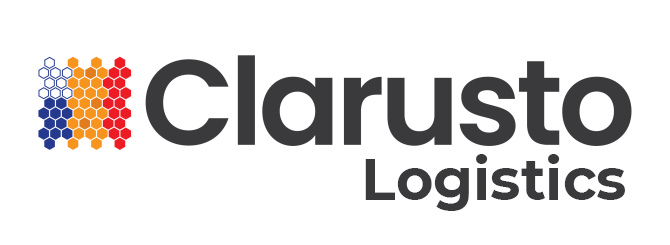
Discover the benefits of Hyperlocal Logistics for businesses, from faster delivery times to enhanced customer satisfaction. Explore how localized delivery networks are shaping the future of retail logistics.
Introduction:
In recent years, Hyperlocal Logistics has become a game-changer in the supply chain world, transforming the way businesses deliver goods and services to customers. Unlike traditional logistics models that focus on centralized distribution centers, Hyperlocal Logistics targets smaller, localized markets, allowing businesses to meet the growing demand for faster, more efficient delivery.
This shift towards localized delivery networks provides a variety of benefits for both businesses and consumers. By implementing Hyperlocal Logistics, companies can offer same-day delivery options, enhance customer satisfaction, and streamline their operations. This blog delves into the key benefits of Hyperlocal Logistics and why it’s becoming a must-have for modern businesses.
What is Hyperlocal Logistics?
Hyperlocal Logistics refers to a distribution model where goods and services are delivered within a limited geographic area, typically from a local hub or store to the customer’s location. This approach relies on localized delivery networks, where businesses can deliver products faster and with greater flexibility.
This model has become particularly popular with e-commerce, grocery, and food delivery services, which require swift and efficient delivery to stay competitive. Businesses leverage Hyperlocal delivery solutions to ensure that customers receive their orders within hours, or sometimes minutes, of placing them.
Key Benefits of Hyperlocal Logistic
1. Faster Delivery Times
One of the most significant advantages of Hyperlocal Logistics is its ability to offer same-day or even one-hour delivery options. Since the products are stored and delivered from local hubs or stores, businesses can dramatically reduce the distance traveled. This allows companies to meet the growing demand for quick deliveries, especially in metropolitan areas where speed is essential.
For retailers, using Hyperlocal delivery solutions enhances customer satisfaction, making it easier for them to compete with large e-commerce giants like Amazon, which offer same-day or next-day delivery.
2. Cost-Efficiency
Unlike traditional logistics models that require centralized warehouses and longer delivery routes, Hyperlocal Logistics operates on a much smaller scale. Businesses can cut costs by reducing the need for large storage facilities and minimizing fuel expenses associated with long-distance transportation.
In addition, by utilizing Hyperlocal supply chain methods, businesses can optimize inventory and reduce wastage. Companies no longer need to stockpile goods in massive warehouses but can instead use localized hubs that distribute products based on real-time demand. This reduces holding costs, improves cash flow, and allows for more agile inventory management.
3. Environmental Sustainability
Another key benefit of Hyperlocal Logistics is its potential to reduce carbon emissions. With shorter delivery routes and optimized distribution networks, businesses can minimize their environmental footprint. This is a significant advantage for companies that are committed to sustainability goals.
By incorporating Hyperlocal delivery solutions, businesses contribute to reducing traffic congestion in urban areas and lowering fuel consumption. This approach not only aligns with sustainability initiatives but also helps businesses enhance their brand reputation among eco-conscious consumers.
4. Enhanced Customer Experience
In today’s competitive market, customers expect speed and convenience. Hyperlocal Logistics enables businesses to offer a more personalized and customer-centric delivery experience. Whether it’s same-day grocery delivery or on-demand services, businesses that implement Hyperlocal supply chain models can exceed customer expectations by providing faster, more flexible delivery options.
With the rise of mobile apps and online platforms, customers can track their deliveries in real-time, receive updates, and even communicate with the delivery person. This level of transparency improves trust and loyalty, enhancing the overall customer experience.
5. Support for Local Economies
An often-overlooked benefit of Hyperlocal Logistics is its positive impact on local economies. By using localized delivery networks, businesses can partner with local vendors, drivers, and suppliers. This not only helps to support the local workforce but also stimulates regional economic growth.
Small businesses, in particular, benefit from Hyperlocal retail logistics, as it gives them a competitive edge against larger companies. Localized networks make it easier for small retailers to reach nearby customers, offering personalized services and faster delivery without having to compete on a global scale.
6. Improved Flexibility and Scalability
One of the core advantages of Hyperlocal Logistics is the ability to scale operations based on demand. Since businesses rely on smaller, localized hubs rather than large, centralized warehouses, they can easily adjust their operations according to seasonal fluctuations or customer preferences.
This flexibility also extends to delivery methods. Companies can explore multiple Hyperlocal delivery solutions, such as using bicycles, electric vehicles, or even drones, depending on the area’s infrastructure. The ability to adapt to different delivery modes enhances the efficiency of Hyperlocal supply chain operations.
Challenges to Overcome
While Hyperlocal Logistics offers numerous benefits, businesses must also address certain challenges. For example, maintaining a balance between cost and speed can be tricky, as hyperlocal models require investment in technology, local partnerships, and logistics software to manage inventory efficiently. Additionally, expanding Hyperlocal supply chain operations to rural or less densely populated areas may be challenging due to a lack of infrastructure.
Despite these challenges, the potential of Hyperlocal Logistics in revolutionizing delivery models cannot be overlooked. Businesses that invest in building robust localized delivery networks can gain a competitive edge in a rapidly changing market.
Conclusion
The rise of Hyperlocal Logistics is transforming the way businesses operate, offering faster delivery times, cost-efficiency, environmental benefits, and improved customer satisfaction. By leveraging Hyperlocal delivery solutions, businesses can meet the growing demand for speed and convenience while supporting local economies and reducing their environmental footprint.
For businesses that are looking to stay competitive in the modern market, adopting Hyperlocal supply chain strategies is no longer optional but essential. With the right technology and local partnerships, companies can unlock the full potential of Hyperlocal Logistics, setting the stage for long-term success.

